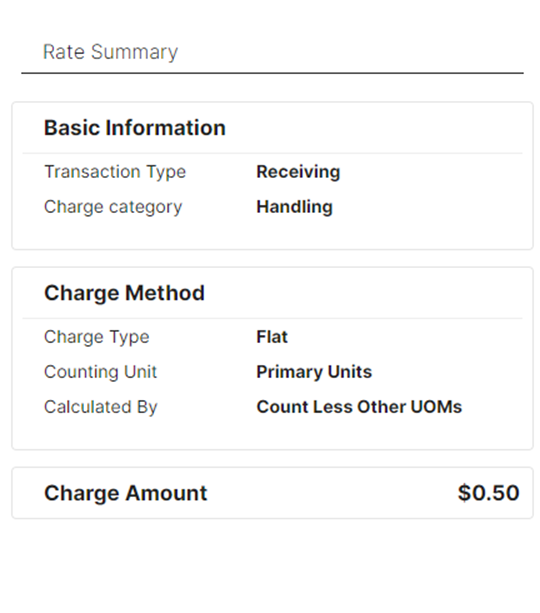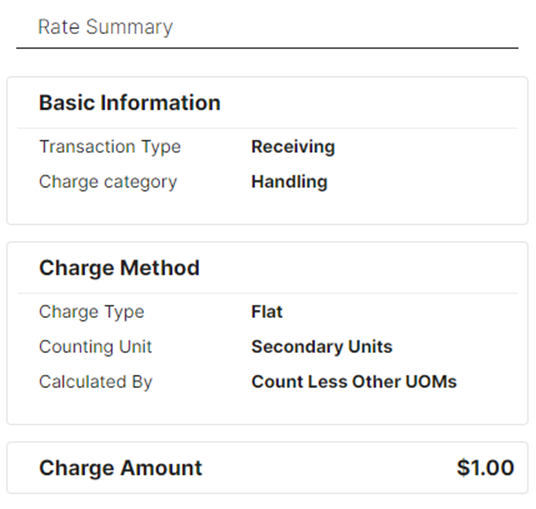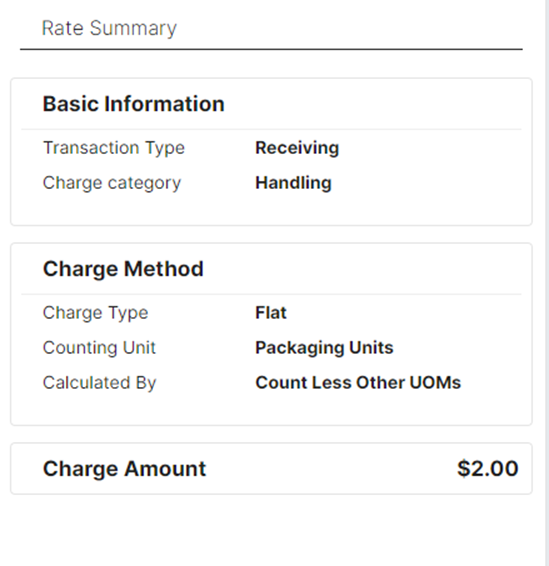Count Less Other UOMs (Unit of Measures) Pre-Condition
This article is about the Billing Manager app, not the Billing Wizard in 3PL Warehouse Manager. To learn about the Billing Wizard, please refer to the articles in the Billing Setup.
This article outlines the steps to create a rate that distinguishes and charges separately for primary, packaging, and pallet units of measure. For instance, within the item setup, if a Package Unit of Measure Quantity is defined as '12 Eaches Per Package,' this rate will differentiate between the total number of Eaches and the total number of packages in the transaction. It will then charge for each unit type separately, with distinct charge amounts.
Utilizing the 'Count Less Other UOM' Calculate By method necessitates defining all Unit of Measure Quantities for each Item Setup. This includes:
- Secondary UOM Qty (if being used)
- Packaging UOM Qty
- Movable Unit Qty.
The rationale behind this is that when a transaction is finalized and forwarded to Billing Manager for charging, the Total Transaction Quantity is employed to compute each Unit of Measure based on the Item Setup.
Example:
Consider the following Item setup:
- Secondary UOM Qty = 6 Primary Units
- Packaging UOM Qty = 24 Primary Units
- Movable Unit Qty = 1,200 Primary Units
If the Total Receipt Qty is 1,233, then the Units of Measure counted will be as follows:
- Pallet count = 1 (Accounting for 1 pallet quantity of 1,200, leaving a remainder of 33)
- Package count = 1 (Sufficient for 1 package quantity of 24, with a remainder of 9)
- Secondary count = 1 (Covering 1 inner pack quantity of 6, with a remainder of 3)
- Primary count = 3 (The remaining quantity that doesn't form a complete inner pack).
Primary UOM

Secondary UOM

Packaging UOM

Using the example above:
Given the following Primary, Secondary, and Package Count Less Other UOMs rates are added as Receiving-type transactions and assigned to a customer.
However, the Movable Unit Count Less Other UOM rate IS NOT added
The result remains as follows:
- Package count = 1 (Sufficient for 1 package quantity of 24, leaving a remainder of 9)
- Secondary count = 1 (Sufficient for 1 inner pack quantity of 6, with a remainder of 3)
- Primary count = 3 (The remaining quantity that doesn't constitute a complete inner pack).
Reason: The Movable Unit Qty is accounted for separately and is deducted from the total available quantity before allocating to other Units of Measure. Consequently, the Movable Unit Qty of 1,200 is not considered as part of the Secondary or Packaging Units of Measure.
